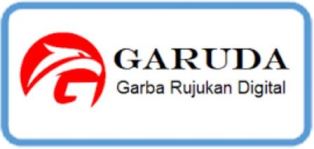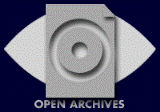KONTRIBUSI PENGGUNAAN APLIKASI EDMODO DAN KREATIVITAS BELAJAR SISWA TERHADAP HASIL BELAJAR PADA MATA PELAJARAN SIMULASI DIGITAL (SIMDIG) DI SMK
 ), Denny Kurniadi(2),
), Denny Kurniadi(2), (1)
(2) Universitas Negeri Padang
 Corresponding Author
Corresponding Author
DOI : https://doi.org/10.24036/voteteknika.v6i2.102170
Full Text:
 Language : id
Language : id
Abstract
The purpose of this research was to reveal the magnitude of the contribution of using edmodo applications and the creativity of learning towards the learning results of Digital Simulation (SIMDIG) subjects in SMK. This type of research is descriptive correlation. The research population is 89 people and the sample is 51 students of Software Engineering X class X at SMK N 2 Padang Panjang. The sampling technique is done randomly (Simple Random Sampling). Student learning outcomes data obtained from subject teachers Digital Simulation SMK N 2 Padang Panjang.While the data using edmodo applications and learning creativity are collected through questionnaires using a Likert scale that has been tested validity and reliability. Data were analyzed using statistical correlation method with the help of Microsoft Excel 2007 and SPSS Version 16.0 software. The results of the data analysis showed: (1) The use of edmodo application and learning creativity together contributed 31.7% to the learning outcomes of students of class X Software Engineering SMK N 2 Padang Panjang; (2) The use of edmodo application contributes 17% towards the learning result students class X Software Engineering SMK N 2 Padang Panjang; (3) Learning creativity contributes 9% to students' learning outcomes Class X of Software Engineering SMK N 2 Padang Panjang. So it can be concluded the use of edmodo applications and creativity of learning contributed learning outcomes.The higher creativity of learning and the more optimal the use of edmodo applications, the learning outcomes will be more optimal.
Keyword : Use of Edmodo Application, Learning Creativity, Learning Outcomes, Correlation Descriptive, Simple Random Sampling.
References
Yumiarti, D. S., Efrizon, E., & Huda, A. (2018). PENGARUH METODE PEMBELAJARAN EXPLICIT INSTRUCTION TERHADAP HASIL BELAJAR SISWA PADA MATA PELAJARAN PEMROGRAMAN WEB DINAMIS KELAS XI JURUSAN REKAYASA PERANGKAT LUNAK (RPL) DI SMK NEGERI 1 SINTUK TOBOH GADANG. Jurnal Vokasional Teknik Elektronika dan Informatika, 6(1).
C. Kongchan, “How a Non-Digital-Native Teacher Makes Use of Edmodo,” 2008.
B. K. Gushiken, “Integrating Edmodo into a High School Service Club : To Promote Interactive Online Communication,” pp. 1–6, 2013.
K. Balasubramanian, V. Jaykumar, and L. Nitin, “A study on ‘ Student preference towards the use of Edmodo as a learning platform to create responsible learning environment’’Procedia - Soc. Behav. Sci., vol. 144, pp. 416–422, 2014.
M. A. S. Enriquez, “Students Perceptions on the Effectiveness of the Use of Edmodo as a Supplementary Tool for Learning,” pp. 6–11, 2014.
T. Eslaminejad, M. Masood, and N. A. Ngah, “Assessment of instructors’ readiness for implementing e-learning in continuing medical education in Iran.,” Med. Teach., vol. 32, no. 10, pp. e407–e412, 2010.
Utami Munandar. 2009. Pengembangan Kreativitas Anak Berbakat. Jakarta: Rineka Cipta.
Suryosubroto, B. 2009. Proses Belajar Mengajar di Sekolah. Jakarta: Rineka ___.Cipta.
Slameto. 2010. Belajar dan Faktor-Faktor yang Mempengaruhinya. Jakarta: PT. Rineka cipta.
Delianti, V., Hendriyani, Y., & Marta, R. (2018). PENGEMBANGAN BAHAN AJAR MATA KULIAH PEMROGRAMAN VISUAL DENGAN MENGGUNAKAN PROJECT BASED LEARNING. Jurnal Teknologi Informasi Dan Pendidikan, 11(2), 49-54.
______2011. Penilaian Hasil Proses Belajar Mengajar.Bandung:PT.Remaja Rosda karya
Suharsimi. 2010. Manajemen Penelitian. Jakarta: Rineka Cipta.
Sugiyono. 2012. Metode Penelitian Kuantitatif Kualitatif dan R&D. Bandung: Alfabeta.
Riduwan. 2004. Belajar Mudah Penelitian, untuk karyawan, Guru & Peneliti Pemula. Bandung: ALFABETHA
Nana Sudjana. 2009. Metode Statistika. Bandung: Tarsirto.
Priyatno. 2008. Paham Analisis Statistik Data Dengan SPSS. Yogyakarta : Mediakom.
Sambas dan Maman. 2007. Analisis Korelasi Regresi dan Jalur dalam Penelitian. Bandung: Pustaka Setia.
Ray, S. E., Almasri, A., & Faiza, D. (2018). KONTRIBUSI SARANA PRASARANA DAN MOTIVASI BELAJAR SISWA TERHADAP HASIL BELAJAR MATA DIKLAT DASAR LISTRIK DAN ELEKTRONIKA KELAS X DAN XI AUDIO VIDEO DI SMK NEGERI 1 SUMATERA BARAT. Jurnal Vokasional Teknik Elektronika dan Informatika, 6(1).
 Article Metrics
Article Metrics
 Abstract Views : 340 times
Abstract Views : 340 times
 PDF (Bahasa Indonesia) Downloaded : 61 times
PDF (Bahasa Indonesia) Downloaded : 61 times
Refbacks
- There are currently no refbacks.



.png)







